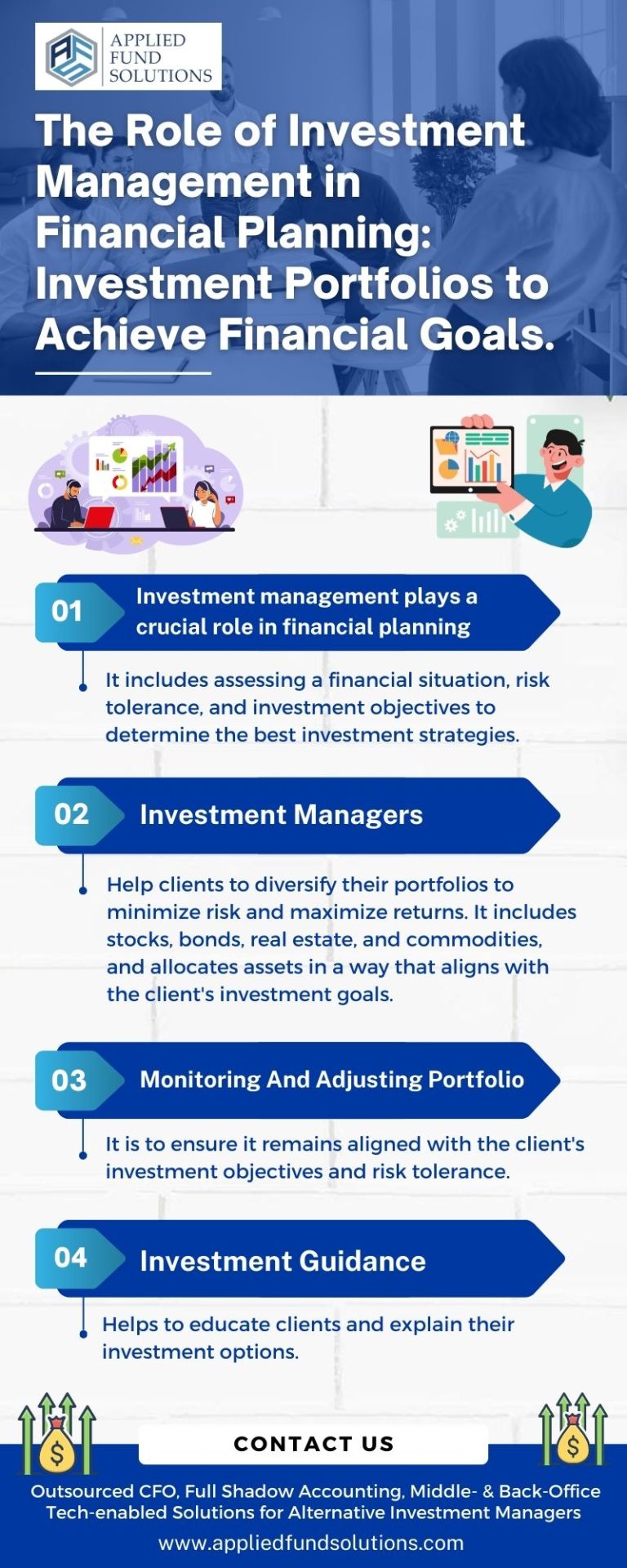#Investment Strategies
Text
Mastering the Art of Investing: Practical Strategies for Insightful Decision-Making
Key Point:
Making smart and insightful investment decisions is an attainable goal with the right strategies in place. By recognizing your limitations, managing emotions, seeking professional guidance, and aligning your investments with personal objectives, you can cultivate a robust and successful investment portfolio that stands the test of time.
Sound investment decisions are the bedrock of financial success. However, navigating the complex world of investing can be challenging, even for the most seasoned investors. This post explores practical strategies for making smart and insightful investment decisions, empowering you to grow your wealth with confidence and finesse.
Recognize the Limits of your Abilities
In both life and investing, it is crucial to acknowledge the boundaries of our expertise. Overestimating our abilities can lead to ill-advised decisions and, ultimately, financial losses. By cultivating humility and seeking external guidance when necessary, we can minimize risks and make more informed investment choices.
Manage Emotional Influence on Decision-Making
Emotions can significantly impact our ability to make rational decisions. To circumvent the sway of emotions, adopt a disciplined approach to investing, relying on data-driven analysis and long-term strategies rather than succumbing to impulsive reactions.
Leverage the Expertise of an Advisor
Engaging a professional financial advisor is a prudent investment decision. Their wealth of knowledge and experience can help you navigate market complexities and identify opportunities tailored to your financial goals, risk tolerance, and investment horizon.
Maintain Composure Amidst Market Volatility
Periods of market turbulence can incite panic among investors. However, it is essential to remain level-headed and maintain a long-term perspective during such times. Avoid making impulsive decisions based on short-term fluctuations and focus on your overarching financial objectives.
Assess Company Management Actions Over Rhetoric
When evaluating potential investments, examine the actions of a company's management rather than relying solely on their statements. This approach ensures a more accurate understanding of the organization's performance, financial health, and growth prospects.
Prioritize Value Over Glamour in Investment Selection
The most expensive investment options are not always the wisest choices. Focus on identifying value rather than being swayed by glamorous or high-priced options. This strategy promotes long-term financial growth and mitigates the risk of overpaying for underperforming assets.
Exercise Caution with Novel and Exotic Investments
While unique and exotic investment opportunities may appear enticing, approach them with caution. Ensure thorough research and due diligence before committing to such investments, as they may carry higher risks and potential pitfalls.
Align Investments with Personal Goals
Invest according to your individual objectives rather than adhering to generic rules or mimicking the choices of others. Personalized investment strategies are more likely to yield favorable results, as they account for your unique financial circumstances, risk appetite, and long-term aspirations.
Making smart and insightful investment decisions is an attainable goal with the right strategies in place. By recognizing your limitations, managing emotions, seeking professional guidance, and aligning your investments with personal objectives, you can cultivate a robust and successful investment portfolio that stands the test of time.
Action plan: Learn a few simple rules and ignore the rest of the advice you receive.
It’s easy to become completely overwhelmed by the volume of advice available about investing. However, you don’t need to become an expert on the stock market in order to become a good investor.
Just like an amateur poker player can go far if he simply learns to fold his worst hands and bet on his best ones, a novice investor can become very competent just by following a few simple rules. For example, he should learn not to overreact to dips in the market and make sure to purchase value stocks instead of glamour stocks.
#Financial freedom#Building wealth#Personal finance strategies#Investment advice#Passive income stream#Early retirement planning#Debt reduction#Budgeting tips#Saving money#Wealth management#Financial independence#Secure financial future#Retirement planning#Financial planning#Personal finance#Money management#Investment strategies#Retirement savings#Investment portfolio#Financial education#Wealth creation#Financial goals#Wealth building#Financial security#Retirement income#Passive income ideas#Financial advice#Financial wellness#Financial planning tools#Financial management
28 notes
·
View notes
Text
Mastering Personal Finance and Investing: Your Ultimate Guide to Financial Freedom
Introduction: Understanding the Importance of Personal Finance and Investing
Personal Finance and Investing: Your Path to Financial Freedom
Importance of Personal Finance and Investing for Wealth Creation
The Basics of Personal Finance: Budgeting, Saving, and Debt Management
Mastering the Basics: Budgeting, Saving, and Debt Management
Budgeting Tips for Effective Personal Finance…
View On WordPress
#personal finance#financial planning#money management#budgeting#savings#debt management#investing#wealth creation#retirement planning#401(k)#IRA#stock market#real estate investing#compound interest#tax planning#financial freedom#financial education#money tips#financial goals#investment strategies#financial literacy#wealth management#financial advice#financial independence#money mindset#financial success
20 notes
·
View notes
Text
Living Below Your Means: A Millionaire's Financial Secret
Unlock the financial secrets of millionaires! 💰 Learn how to live below your means and adopt millionaire habits. Read the full blog - Link-in-bio #FinancialSuccess #MillionaireMindset #SmartGoals #MillionaireThinking #Wealthy #Save #LiveBelowYourMeans
Have you ever wondered how some people manage to become millionaires without having a high-paying job, winning the lottery, inheriting a fortune, or starting a successful business? How do they accumulate wealth and achieve financial freedom while others struggle to make ends meet? The answer is simple: they live below their means.
Living below your means is a financial strategy that involves…

View On WordPress
#Embracing failure#Financial Freedom#Financial success#Gratitude mindset#Growth Mindset#Income tracking#Investment Strategies#Lifelong learning#Millionaire#Millionaire Habits#Money Management#Networking#Positive thinking#Self-improvement#SMART goals#Success#Wealth building#Wealth creation#Wealth Mindset
2 notes
·
View notes
Text
Top Investment Strategies for Millennials
As millennials enter the workforce and begin building their financial futures, investing becomes a key component of wealth growth and long-term financial stability. To make informed investment decisions and achieve their financial goals, millennials need to explore the top investment strategies available to them. In this article, we’ll delve into some of the best investment strategies for…

View On WordPress
#Financial Freedom#Financial Goals#Financial Planning#Index Funds#Investment Strategies#Investments#Millennials#Personal Finance#Real Estate#Retirement Accounts#Retirement Planning#Retirement Savings#Wealth Growth
7 notes
·
View notes
Text
Mastering Intraday Stock Trading: Strategies, Tips, and Risks
Intraday stock trading, also known as day trading, is a high-stakes endeavor where traders buy and sell stocks within the same trading day. It’s a thrilling pursuit that requires skill, discipline, and a deep understanding of the market. In this article, we’ll explore the world of intraday stock trading, covering strategies, tips, and the inherent risks involved.### Understanding Intraday…

View On WordPress
#Brokerage Fees#Capital Management#Commissions#Contrarian Trading#Day Trader#Day Trading#Diversification#Economic Events#Emotional Trading#Financial Instruments#Financial Markets#Intraday Trading#Investment Strategies#Market Analysis#Market Behavior#Market Liquidity#Market Opening#Market Psychology#Market Research#Market Sentiment.#Market Timing#Market Trends#Momentum Trading#Portfolio Management#Price Fluctuations#Risk Assessment#Risk Management#Scalping#Short-Term Trading#Stock Market
6 notes
·
View notes
Text
How you should invest in your 20s – housesofinvestors
Introduction
Investing is one of the most important things you can do for your future. It helps build wealth and gives you a chance to really see how much money you’re making over time. But it’s not always easy—especially when you’re young! Here are some tips so that you can invest in your 20s:
Get rid of any high-interest debt
High-interest debt is the worst kind of debt, and it’s one of the biggest threats to your financial future. If you have high-interest debt, it’s time to get rid of it (or at least pay off as much as possible).
Here are some tips for paying off high interest rates:
Only use credit cards when absolutely necessary. If there’s anything about credit cards that makes me want to vomit—and I mean vomit—it’s their exorbitant interest rates. The average APR on a 30 day introductory balance is around 19%. That means if you carry a $10,000 balance with an 18% APR, then every month alone adds up to almost $1,200 in interest charges! And who wants those kinds of monthly payments? No thanks! Instead make sure all purchases are made cash or debit card so that no one has access to any information about them except themselves (this goes double if they’re trying buy something expensive).
Avoid taking out new loans until after graduation day because even though borrowing money now doesn’t seem like much trouble now since everyone else seems so successful at doing this stuff without owing anyone anything back yet either end up paying huge amounts later down road when things go wrong due lack knowledge about how best manage finances during early twenties years where risk taking behavior may increase significantly due lack experience gained beforehand.”

Invest in what you know
Once you’ve completed your high school education, it’s time for the next step in your journey: investing. This may sound like a daunting task, but there are plenty of ways that you can invest in yourself and make sure that you’re doing things that are right for your interests and goals.
Investing in yourself means investing in what makes you happy—whether that’s dancing or playing tennis; volunteering at an animal shelter or helping out at an art gallery; collecting antiques or making music with friends. It also means putting down roots (literally) by moving out of home or getting married so that one day when those kids come along they don’t have to move away from their family again because their parents had big dreams but couldn’t follow through on them due to financial constraints.”
Buy term life insurance
Term life insurance is the best way to protect yourself and your family, since it protects you against the death of someone else.

Look into a Roth IRA
If you’re worried about paying taxes on your income when you invest, a Roth IRA is a great way to keep the money in your pocket—and out of the hands of Uncle Sam.
A Roth IRA can be opened by anyone who has earned income and reaches age 59½ (or 60 if they are disabled). The maximum contribution limit is $6,000 per year ($5,500 if married filing jointly). The IRS lets you contribute more than this amount if you have earned income above that threshold; however, there won’t be any tax deduction for doing so.
The advantage of opening an individual retirement account (IRA) is that once it’s open, contributions made into them don’t count toward taxable income until withdrawn or used for other purposes—so long as they aren’t withdrawn within five years after being deposited into an account
Don’t chase returns or hot stocks

When you start investing early, it’ll pay off later on in life
When you start investing early, it’ll pay off later on in life.
Investing early helps build a good foundation for your retirement. You can start with a small amount of money, and it will grow over time. This means that if the market goes up or down during the years that follow, you won’t lose everything because of bad timing or an ill-timed purchase (such as buying high and selling low).
Having more time to make up for mistakes is great! If something doesn’t work out as planned—like trying out an investment strategy that doesn’t pan out well—you’ll have more time before having to get rid of all those investments so they don’t take away from other things like rent/mortgage payments or student loans repayment plans..
My Opinion
When you start investing early, it’ll pay off later on in life. It’s important to remember that most of these ideas are things you can do today while still working a job and having fun! If nothing else, this article should give you an idea of what type of investments might be right for your specific situation.
#Tagsearly investing#invest money#invest money in your 20s#investment strategies#investment tips#writers on tumblr#finance#blogger
6 notes
·
View notes
Text
A Guide on 5 Best Investment Strategies for Beginners
For a strategic investment consulting firm, understanding the various investment strategies available is crucial to providing valuable insights to clients. This latest blog post explores 5 popular investment strategies for beginners, providing a detailed breakdown of each approach. Whether your clients are interested in growth investing or dividend investing, this guide offers a comprehensive overview of the pros and cons of each strategy. Share this resource with your clients to help them make informed investment decisions and take their portfolios to the next level. Read here: https://solesourcellc.com/5-popular-investment-strategies-for-beginners/
#best investment strategy#an investment consulting business#investment strategies#strategic investment consulting
2 notes
·
View notes
Text

Discover the important role of investment management in financial planning and how it can help you achieve your financial goals. Learn how investment portfolios are created and managed to provide you with the best options for growing your wealth while minimizing risks.Whether you are a beginner or an experienced investor, this page is a must-read for anyone who wants to take control of their finances and achieve long-term financial success.
3 notes
·
View notes
Link
Agostino gives us insight into:
✔️Why he walked away from his 6 figure C level career to go into real estate full time because of his single family home investments
✔️What drove him to focus his real estate business more on development than purchasing stabilized assets
✔️How he takes into account what is happening in the economy in the long term and short term to establish his investing strategy
Learn more about Agostino and connect with him at https://bulletproofcashflow.com
#ezfiuniversity#financial independence#financial freedom#Agostino Pintus#real estate#investments#real estate business#investment strategies#cash flow
6 notes
·
View notes
Text
youtube
Watch our video for expert advice on building a strong investment portfolio in the UAE.
1 note
·
View note
Text
How to Work Less to Achieve More
Key Point:
keep your attention on an important task by adopting hyperfocus. When you hyperfocus, you rid your environment of distractions, and become aware of what’s occupying your mind. What’s more, every time your attention strays, redirect it. Remember is that scatterfocus can help you with tricky problems that require creative solutions. With scatterfocus, you allow the mind to wander and make unusual connections. You can help create scatterfocus by nourishing your mind and allowing time to reflect.
In our fast-paced world, working long hours has become the norm. However, the key to achieving more is not simply working harder or longer—it's about working smarter. In this article, we will explore strategies to help you work less while accomplishing more. By training yourself to enjoy hyperfocus, cultivating meta-awareness and intentional focus, eliminating distractions, harnessing the power of scatterfocus for creative thinking, connecting seemingly unrelated information, and nourishing your mind, you can optimize your productivity and achieve greater success.
Train yourself to enjoy hyperfocus more.
Hyperfocus is a state of intense concentration where you become fully immersed in a task or activity. To work less and achieve more, it's important to train yourself to enjoy and leverage hyperfocus. Set clear goals, break tasks into manageable chunks, and eliminate distractions. Engage in activities that naturally captivate your attention and give you a sense of fulfillment. By training yourself to enjoy hyperfocus, you can maximize productivity and accomplish more in less time.
Meta-awareness and intentional focus are key to managing your attention.
Meta-awareness refers to being aware of your own thoughts and mental processes. Intentional focus involves directing your attention consciously and purposefully. Cultivating these skills is essential for effective attention management. Develop the ability to notice when your mind starts to wander and gently bring your focus back to the task at hand. By practicing meta-awareness and intentional focus, you can reduce time wasted on distractions and stay on track to achieve your goals.
Achieve hyperfocus by ridding your environment of distractions.
Distractions can significantly impact productivity and hinder your ability to work efficiently. Create a conducive work environment by minimizing distractions. Turn off notifications on your phone, close unnecessary browser tabs, and create a physical workspace that promotes focus. Consider using productivity tools or apps that block or limit access to distracting websites or applications. By eliminating external distractions, you can enter a state of hyperfocus and accomplish more in less time.
Scatterfocus helps you plan and think creatively.
Scatterfocus is the practice of intentionally allowing your mind to wander and explore different ideas, without a specific goal or objective. This mental state can be beneficial for planning and creative thinking. Set aside dedicated time for scatterfocus, allowing your mind to freely explore different thoughts and possibilities. Embrace daydreaming, engage in activities that stimulate your imagination, and give yourself permission to think outside the box. By incorporating scatterfocus into your work routine, you can generate fresh ideas and enhance your problem-solving skills.
Use scatterfocus to connect the dots between seemingly unrelated bits of information.
One of the unique benefits of scatterfocus is its ability to facilitate connections between seemingly unrelated information. During moments of scatterfocus, your mind can make unexpected connections and insights. Capture these ideas by carrying a notebook or using a note-taking app to jot down your thoughts. When you revisit these notes later, you may discover valuable connections and insights that can fuel your productivity and lead to innovative solutions.
Nourish your mind to make the most of scatterfocus.
To optimize scatterfocus and enhance your overall productivity, it's important to nourish your mind. Engage in activities that promote mental well-being, such as regular exercise, quality sleep, and mindfulness practices. Take breaks throughout the day to recharge and refresh your mind. Additionally, fuel your brain with nutritious foods that support cognitive function, such as fruits, vegetables, whole grains, and omega-3 fatty acids. By prioritizing self-care and nourishing your mind, you can maximize the benefits of scatterfocus and achieve more with less effort.
Working less while achieving more is within your reach. By training yourself to enjoy hyperfocus, cultivating meta-awareness and intentional focus, eliminating distractions, harnessing the power of scatterfocus for creative thinking, connecting seemingly unrelated information, and nourishing your mind, you can optimize your productivity and achieve greater success. Remember, it's not about working longer hours, but about working smarter. Embrace these strategies, experiment with different techniques, and find the balance that works best for you. As you implement these practices, you'll discover the power of effective attention management and witness your productivity soar.
Action Plan: Have a cup of coffee to help you hyperfocus.
Caffeine and hyperfocus are a match made in heaven. Caffeine keeps you alert and focused. It helps you persevere when work gets boring. And perhaps most importantly, it can improve your performance on a number of cognitive tasks. So the next time you need a burst of intense concentration, make sure you’ve got a cup of coffee to hand – if nothing else, it tastes wonderful.
#Financial freedom#Building wealth#Personal finance strategies#Investment advice#Passive income stream#Early retirement planning#Debt reduction#Budgeting tips#Saving money#Wealth management#Financial independence#Secure financial future#Retirement planning#Financial planning#Personal finance#Money management#Investment strategies#Retirement savings#Investment portfolio#Financial education#Wealth creation#Financial goals#Wealth building#Financial security#Retirement income#Passive income ideas#Financial advice#Financial wellness#Financial planning tools#Financial management
12 notes
·
View notes
Text
Building a Solid Financial Foundation: Budgeting, Saving, and Emergency Funds
The importance of budgeting for financial stability
Creating and sticking to a personal budget is essential for achieving financial stability. A budget helps individuals track their income and expenses, identify areas for saving and cutting costs, and ultimately achieve their financial goals [1]. By creating a budget, individuals can gain a better understanding of their financial situation and…

View On WordPress
#Budgeting#Debt Reduction#Emergency Funds#Financial Education#Financial Goals#Financial Independence#Financial Literacy#Financial Planning#Financial Stability#Frugal Living#Investment Strategies#Money Management#Money Mindset#Personal Finance#Retirement Planning#Saving Money#Smart Spending#Wealth Building#Wealth Management
5 notes
·
View notes
Text
Trends Forecast What's in Store for Real Estate in 2024
Get a glimpse into the future of real estate with a forecast of trends for 2024. Discover how factors like sustainability, technology, and demographics are influencing market dynamics and shaping investment strategies.
0 notes
Text

Navigating Investment Decisions: Exploring the Value of Stock Research Reports on Finology Recipe
Introduction:
In the realm of investment decisions, the significance of stock research reports cannot be overstated. These reports provide investors with essential insights into the performance, potential, and risks associated with specific stocks, aiding in informed decision-making. One reputable platform known for its robust stock research reports is Finology Recipe. In this article, we delve into the significance of stock research reports and how Finology Recipe serves as a valuable resource for investors seeking to navigate the complexities of the stock market.
Unpacking the Essence of Stock Research Reports:
Stock research reports serve as in-depth analyses that delve into the financial metrics, management competency, competitive positioning, and growth prospects of individual companies. Conducted by experienced financial analysts or research teams, these reports offer a comprehensive examination of various factors impacting a company's stock performance, enabling investors to make well-informed decisions based on thorough insights.
Leveraging Finology Recipe’s Stock Research Reports:
Finology Recipe emerges as a trusted platform offering a diverse array of stock research reports designed to empower investors in their decision-making process. Let's explore how Finology Recipe's stock research reports stand out as invaluable resources for investors:
Impartial and Comprehensive Analysis:
At the core of Finology Recipe’s stock research reports lies a commitment to impartiality and comprehensiveness. By presenting unbiased analyses devoid of promotional influences, investors can rely on the accuracy and reliability of the insights provided, allowing for informed decision-making based on factual information.
Expertise-Driven Insights:
Finology Recipe's stock research reports benefit from the expertise of seasoned financial analysts specializing in various industries and sectors. These experts leverage their knowledge and market acumen to deliver insightful analyses of company data, industry trends, and competitive landscapes, equipping investors with nuanced perspectives essential for sound decision-making.
Extensive Coverage:
One of the key strengths of Finology Recipe’s stock research reports is their extensive coverage of companies across diverse industries and sectors. This breadth allows investors to access reports on companies of varying sizes and niches, facilitating the building of a well-diversified investment portfolio and enabling informed decision-making across a spectrum of investment opportunities.
Detailed Financial Data Access:
Investors leveraging Finology Recipe’s stock research reports gain access to detailed financial data crucial for evaluating a company's financial stability and performance. From income statements to key financial ratios, this comprehensive data empowers investors to make informed investment decisions grounded in a thorough understanding of underlying financial metrics.
Education-Centric Approach:
Beyond offering stock research reports, Finology Recipe prioritizes investor education by providing supplementary resources aimed at enhancing financial literacy and market understanding. By incorporating educational materials alongside research reports, investors can deepen their knowledge of investment strategies, risk management practices, and market dynamics, fostering a well-rounded approach to decision-making.
Conclusion:
Stock research reports from Finology Recipe serve as invaluable tools for investors seeking to navigate the intricate landscape of investment decisions with confidence and clarity. By leveraging the impartiality, expertise, extensive coverage, and educational resources offered through these reports, investors can gain a holistic understanding of investment opportunities, assess risks effectively, and make well-informed decisions aligned with their financial goals. While stock research reports are essential resources, investors must complement this information with their due diligence and a diversified approach to investment decision-making in the dynamic world of finance.
0 notes
Text
Step-by-Step Guide: How to Invest in India and Maximize Returns

Investment is the process of allocating resources, usually money, with the expectation of generating future income or profit. It involves deploying funds into various assets or financial instruments with the goal of increasing wealth or achieving specific financial objectives over time.
Key Aspects of Investment:
1. Objective: Investors typically have specific objectives when investing, such as wealth accumulation, capital preservation, income generation, or achieving long-term financial goals like retirement planning or funding education.
2. Risk and Return: Investments inherently involve risk. Generally, the higher the potential return, the greater the risk. Balancing risk and return is crucial, and different investment options offer varying levels of risk-reward trade-offs.
3. Asset Classes: Investments can be made across different asset classes, including stocks, bonds, real estate, commodities, mutual funds, exchange-traded funds (ETFs), and more. Diversifying across asset classes helps spread risk and optimize returns.
4. Time Horizon: Investment goals often have specific timeframes. Short-term goals may involve lower-risk assets, while long-term goals might allow for a more aggressive investment strategy, considering the potential for higher returns over an extended period.
5. Market Dynamics: Investment decisions are influenced by market conditions, economic factors, geopolitical events, and other external forces. Staying informed about market trends and economic indicators is crucial for making informed investment choices.
6. Risk Tolerance: Understanding one's risk tolerance is essential. Some investors can withstand higher volatility, while others prefer more stable, conservative investments. Assessing personal risk tolerance helps in selecting suitable investment options.
7. Diversification: Spreading investments across different assets or sectors reduces the overall risk of a portfolio. A diversified portfolio minimizes the impact of negative events affecting a single asset or sector.
8. Monitoring and Review: Regularly reviewing investments and adjusting the portfolio based on changing goals, market conditions, and life circumstances is vital. Rebalancing the portfolio ensures it aligns with the investor's objectives.
Investment involves a thoughtful allocation of funds with the aim of achieving financial objectives. It's a strategic process that considers risk, return, diversification, and market dynamics to maximize the potential for growth or income generation while aligning with the investor's goals and risk tolerance. Making informed decisions and staying disciplined in the investment approach are key to successful wealth accumulation and achieving financial milestones.
Investing in India's dynamic and rapidly evolving market offers a myriad of opportunities for both seasoned investors and those seeking to venture into the realm of international investments. As one of the world's fastest-growing major economies, India beckons with its diverse sectors, burgeoning consumer base, and a landscape ripe for innovation and growth.
Investing in India involves several avenues and methods. Here's a step-by-step guide on how to invest in India:
1. Research and Understanding:
- Market Analysis: Begin by researching India's economic trends, market performance, and sectors showing growth potential. Understand the country's regulatory environment, policies governing foreign investments, and macroeconomic indicators.
- Investment Goals: Define your investment objectives, risk tolerance, and preferred investment horizon. Determine whether you seek long-term growth, income generation, or capital appreciation.
2. Choose the Investment Vehicle:
- Equities: Invest directly in Indian stocks through brokerage firms or online trading platforms. Research companies, study their financials, and track market trends before investing.
- Mutual Funds and ETFs: Consider mutual funds or exchange-traded funds (ETFs) that provide diversification across various Indian stocks or sectors, managed by professional fund managers.
- Real Estate: Explore opportunities in Indian real estate, either directly or through real estate investment trusts (REITs) that offer exposure to commercial real estate properties.
3. Open an Investment Account:
- Brokerage Account: To invest directly in Indian stocks, open a brokerage account with a registered broker in India or an international broker offering access to Indian markets.
- **Mutual Fund Account:** For mutual fund investments, set up an account with a registered mutual fund house in India or through platforms offering access to Indian mutual funds.
4. Comply with Regulatory Requirements:
- Know Your Customer (KYC): Complete the KYC process mandated by regulatory authorities in India. This may include providing identity proof, address proof, and other necessary documents.
- Foreign Investment Regulations: Understand and comply with regulations related to foreign investments in India, including sectoral caps, reporting requirements, and tax implications for foreign investors.
5. Execute Investment Strategy:
- Stock Market Investments: Once your investment account is set up, start buying stocks based on your research and investment strategy. Monitor the market regularly and adjust your portfolio as needed.
- Mutual Fund Investments: Choose mutual funds aligned with your investment goals and risk profile. Invest based on fund performance, expense ratios, and fund managers' expertise.
6. Risk Management and Diversification:
- Diversify Portfolio: Spread your investments across different asset classes, sectors, and industries to reduce risk exposure.
- Regular Monitoring: Continuously track your investments, review portfolio performance, and stay informed about market changes and economic developments.
7. Tax Implications and Compliance:
- Understand Taxation: Familiarize yourself with India's tax laws and how they apply to your investments. Tax rates may vary based on the type of investment and duration.
- Compliance and Reporting: Ensure compliance with tax regulations and reporting requirements applicable to foreign investors investing in India.
8. Seek Professional Guidance:
- Financial Advisors: Consider consulting financial advisors, legal experts, or investment professionals who specialize in Indian markets to gain insights and guidance for your investment decisions.
Investing in India offers diverse opportunities, but it's essential to conduct thorough research, understand the regulatory landscape, and tailor your investments to align with your financial goals and risk tolerance. Additionally, staying updated on market trends and seeking expert advice can help optimize investment outcomes.
Understanding the Indian Investment Landscape
India's investment ecosystem is a mosaic of opportunities spanning various sectors, from technology and manufacturing to healthcare, infrastructure, and renewable energy. A comprehensive understanding of the market trends, regulatory environment, and economic indicators serves as the foundation for successful investment endeavors.
Assessing Investment Avenues
The Indian market offers diverse investment avenues, catering to different risk appetites and investment horizons. Equities, government securities, mutual funds, real estate, and venture capital are among the myriad options available to investors. Each avenue presents unique opportunities, risks, and potential returns, demanding a thorough assessment aligned with individual investment goals.
1. Equities and Stock Market: Investing in Indian equities offers opportunities in both large-cap and mid-cap companies across various sectors. Conducting thorough research, understanding company fundamentals, and monitoring market trends are key to making informed investment decisions in the stock market.
2. Government Securities and Bonds: India's government securities and bonds provide relatively stable investment options. These can offer fixed returns, making them suitable for investors seeking more conservative avenues.
3. Real Estate: The Indian real estate market has seen fluctuations but remains a significant investment avenue. Residential and commercial properties, along with the potential for rental income and capital appreciation, attract investors.
4. Mutual Funds and ETFs: Mutual funds and exchange-traded funds (ETFs) allow diversification across a range of assets, offering exposure to various sectors and reducing individual stock risk.
Research and Due Diligence
In-depth research and due diligence form the bedrock of successful investment decisions. Analyzing market trends, studying sector-specific growth trajectories, assessing financial performance, and understanding regulatory frameworks are pivotal steps in identifying lucrative investment opportunities.
Identifying High-Potential Sectors
1. Technology: India's thriving tech industry presents immense opportunities. Software development, IT services, digital innovation, and e-commerce are sectors experiencing rapid growth.
2. Healthcare: The healthcare sector, including pharmaceuticals, biotechnology, and telemedicine, is expanding due to increased healthcare spending and growing demand for quality healthcare services.
3. Renewable Energy: India's focus on renewable energy presents investment prospects in solar, wind, and other clean energy sources, supported by government initiatives and rising environmental consciousness.
4. Infrastructure: With ongoing infrastructure development projects, investing in areas like roads, railways, airports, and smart cities offers long-term growth potential.
Identifying High-Potential Sectors
Certain sectors within the Indian economy stand out as high-potential areas for investment. The technology sector, driven by India's prowess in software development and innovation, continues to attract attention, along with burgeoning opportunities in healthcare, renewable energy, e-commerce, and infrastructure development.
Navigating Regulatory Frameworks
Understanding India's regulatory landscape is crucial for investors. Familiarizing oneself with foreign investment regulations, taxation policies, and sector-specific guidelines is essential to ensure compliance and mitigate legal risks associated with investments.
Selecting the Right Investment Vehicle
Choosing the appropriate investment vehicle aligns with individual risk tolerance and investment goals. Direct stock market investments, mutual funds, exchange-traded funds (ETFs), or venture capital opportunities present varied options catering to diverse investment preferences.
Risk Management Strategies
Mitigating risks is an integral part of any investment strategy. Diversification of investments across sectors and asset classes, maintaining a balanced portfolio, and incorporating risk management techniques are prudent approaches to safeguard investments against market volatility.
Building Relationships and Networking
Establishing connections and fostering relationships within India's business ecosystem can provide valuable insights, access to market intelligence, and potential investment opportunities. Networking with industry experts, financial advisors, and local partners can be instrumental in identifying promising ventures.
Executing Investment Strategies
Executing investment strategies entails precise planning and timely execution. Leveraging market insights, adhering to investment timelines, and continuously monitoring portfolio performance are essential components of a successful investment journey.
Investing in India offers a gateway to a vibrant market fueled by innovation, demographic dividends, and robust economic growth. However, success in this venture demands a meticulous approach, comprehensive research, adherence to regulatory frameworks, and a dynamic strategy that evolves with market dynamics.
As the Indian economy continues on its trajectory of growth and transformation, strategic investments hold the potential to unlock significant value and contribute to a diversified and prosperous investment portfolio.
This post was originally published on: Foxnangel
#invest in india#investing in india#current economic trends in india#mutual funds#indian mutual funds#investment strategies#fdi in india#foreign investments in india#foxnangel
1 note
·
View note
Text
Ulcer Index
Unraveling the Ulcer Index: A Comprehensive Guide to Understanding and Utilizing Market Volatility
Introduction:
In the fast-paced world of investing, understanding market volatility is paramount to success. One tool that aids investors in this endeavor is the Ulcer Index.
This comprehensive guide aims to demystify the Ulcer Index, shedding light on its significance, calculation, and practical…
View On WordPress
#Asset allocation#Behavioral Finance#Downside Risk#Drawdown Analysis#Financial Literacy#Financial Markets#Financial Planning#How to Calculate Ulcer Index#Importance of Ulcer Index in Investing#Investment Analysis#Investment education#Investment Performance#Investment Strategies#Investment Tools#Managing Drawdowns with Ulcer Index#Market Risk#Market Volatility#Peter Martin#Portfolio Management#Portfolio Optimization#Risk assessment#Risk Management#Stop-Loss Strategies#Ulcer Index#Ulcer Index and Risk Tolerance#Ulcer Index Applications#Ulcer Index Calculation#Ulcer Index Calculation Method#Ulcer Index in Fund Evaluation#Ulcer Index Interpretation
0 notes